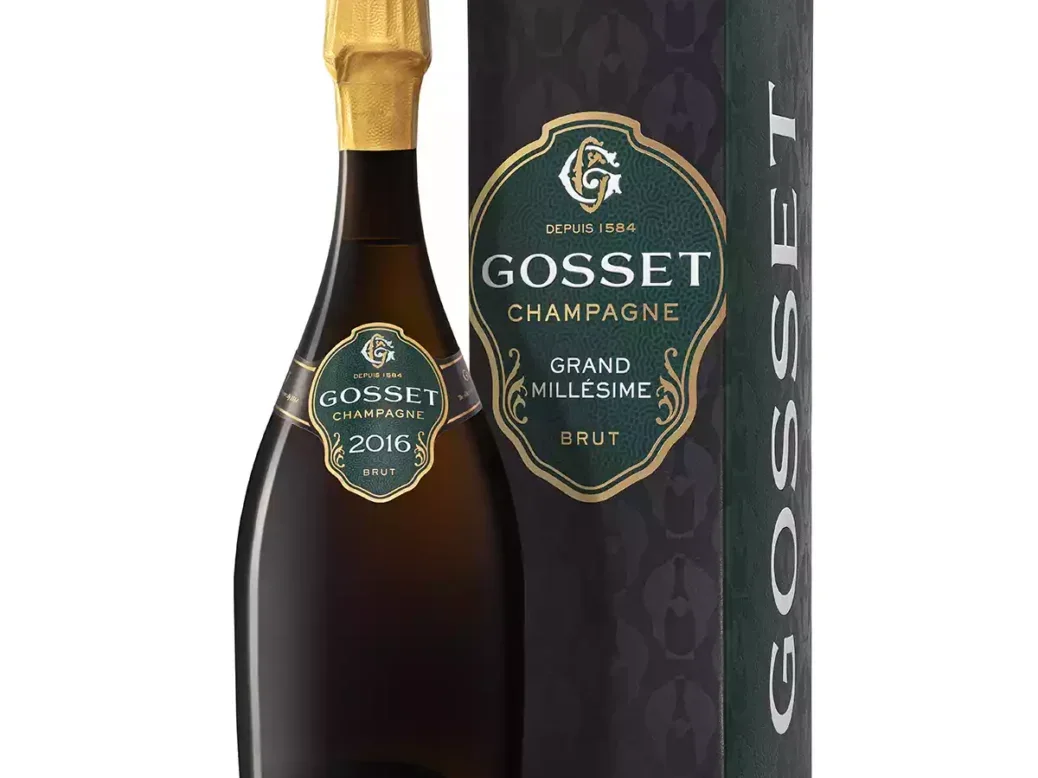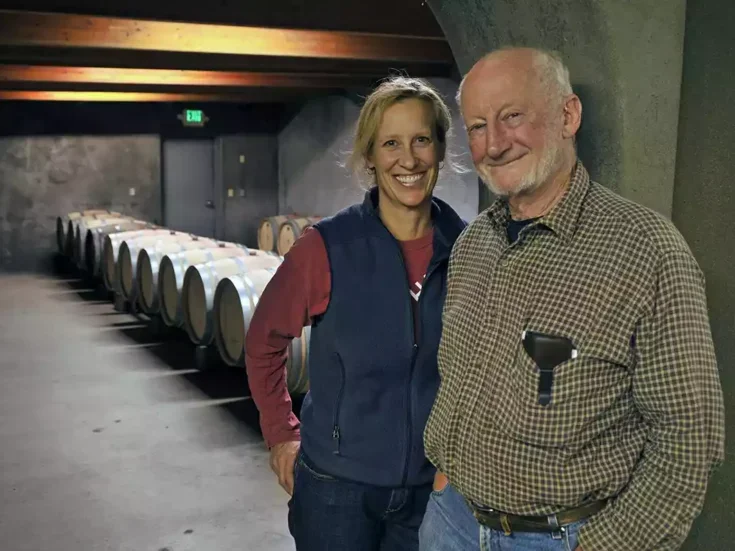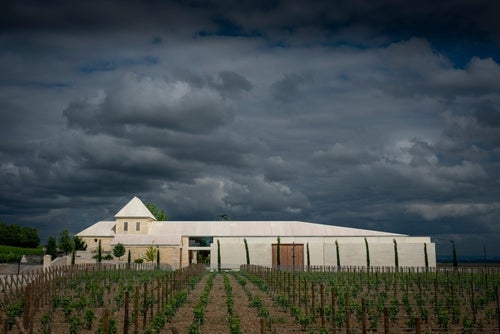
Odilon de Varine is a great thinker; his approach at Gosset has sometimes verged on the contrarian, sometimes stayed close to the mainstream, but its collective fruits make for an inspiring series of wines. The bedrocks of the Grande Réserve and the Grand Millésime are bolstered in particular by the Celebris series and the De Minima family, the latter offered pragmatically in respect of the alchemy that is cellar-based lees-aging.
The latest member of this august Vintage canon focuses on 2016, one of those Champagne years that does not immediately sound alarm bells (2017) or inspire bursts of joy (2019). 2016 is another in a series of early harvests marked by extreme and, for want of a better word, capricious conditions, which included both frost and mildew early in the season, then drought and sunburn in the dog days of summer. The late August harvest yielded a little less than usual, and the crop has less potential alcohol than the balmy 2015 but also a little more acidity. Riper than 2014, perhaps, but less so than many in the modern context of climate-change-inflected Champagne. Early indications pointed to more success with Pinot Noir than Chardonnay.
It may come as a surprise, therefore, to learn that the 2016 Gosset marks a return to dominance by the white grapes. In 2015, Pinot Noir made up 59%; in 2016, it is back to a more typical 39%. Why so? Cellar master Gabrielle Malagu explains that this flexibility is key to the Gosset philosophy, which is focused just as much on the primacy of the yeast-aging process as it is on vineyard husbandry. Gosset is a medium-sized house, with owned and contracted vineyards across the region. Both Odilon and Gabrielle shun the idea of recipes or favored (even if grand cru) villages; each Vintage wine is a tabula rasa onto which components may be conjoined with forensic diligence, each based on its individual contribution to the ensemble. A meritocracy of grapes, then, with no redundancy of courage. Thus in 2015 there were contributions from villages as far apart as Trépail, Villers-Marmery, both in the Montagne, all the way down to Noé-les-Mallets in the Côte des Bar, which bolstered the Pinot Noir in the blend.
Lesser-known villages
In 2016, lesser-known villages are again brought into play. I ask Gabrielle about three of them. Chamery has made the cut because of the “youthful austerity” of its Pinots; Passy has contributed Chardonnay because of its “freshness and tension of flint, aromas closest to grapes themselves”; whereas, on the contrary, the Chardonnays from Pierry are key to the wine developing “sunny and honeyed” notes. Discussions such as these give a fascinating aperçu into the assemblage process, apparently much more restricted by the vintage itself, yet in reality opening up a kaleidoscope of potential—especially, as here, if there are no specific stipulations in terms of the provenance of the fruit.
Both the vintage and the house style underwrite such an approach. Odilon is characteristically flamboyant, describing the wine as “the 2016 harvest immortalized through the Gosset lens.” This particular lens, as usual, cleaves focus by eschewing malolactic fermentation and any use of oak. The purity is all; the ripeness is all. Gabrielle, when asked about dosage, takes us back to the vineyards to underline that the picking date is fundamental; the fact that the dosage for this cuvée appears to have settled at around 4g/l (“Neither a recipe nor an injunction,” Odilon says) is because, although sugar is structurally necessary, it must never interfere with the inner harmony of the wine, which has already had several years to settle and flourish. It is therefore likely to be pitched at the same level for appreciably warmer imminent vintages, such as 2018 or 2020, he adds, tellingly. Phenolic ripeness in the vineyards is key, and canopies must be managed in these warmer conditions to ensure that the sugar levels do not outstretch the latent structural potential.
Odilon’s aim is the juxtaposition of “extreme freshness” and “complex vinosity.” How to achieve one without somehow undermining the other? As long as this question can be posed, with some reassurance of an answer from thoughtful winemakers such as Odilon and Gabrielle, then we can be reassured. Gosset continues to garner a reputation for its responses—enlightened pragmatism built on strong foundations that go all the way back to 1584!
Tasting
2016 Gosset Grand Millésime
(61% Chardonnay, 39% Pinot Noir; dosage 4g/l; disgorged March 2024)
Nacreous and silvery, with a lively shimmer and a slowly unfolding aroma. One is enwrapped by spring flowers, plums, and the fruits of the orchard: almond, mandarin, and red fruit to the fore, despite the Chardonnay dominance. Soft cherry, quince; a tense, lively style, vinous but far from ponderous. Verbena and a hint of iodine at the back, a little phenolic grip; only modest autolytic inference thus far, but a disciplined coda and intimations of a lively, robust development. Just a hint of fennel bitterness on the finish, not quite saline but adding grip and gravitas, a touch of chiaroscuro to an otherwise diligently energetic tableau. | 93






